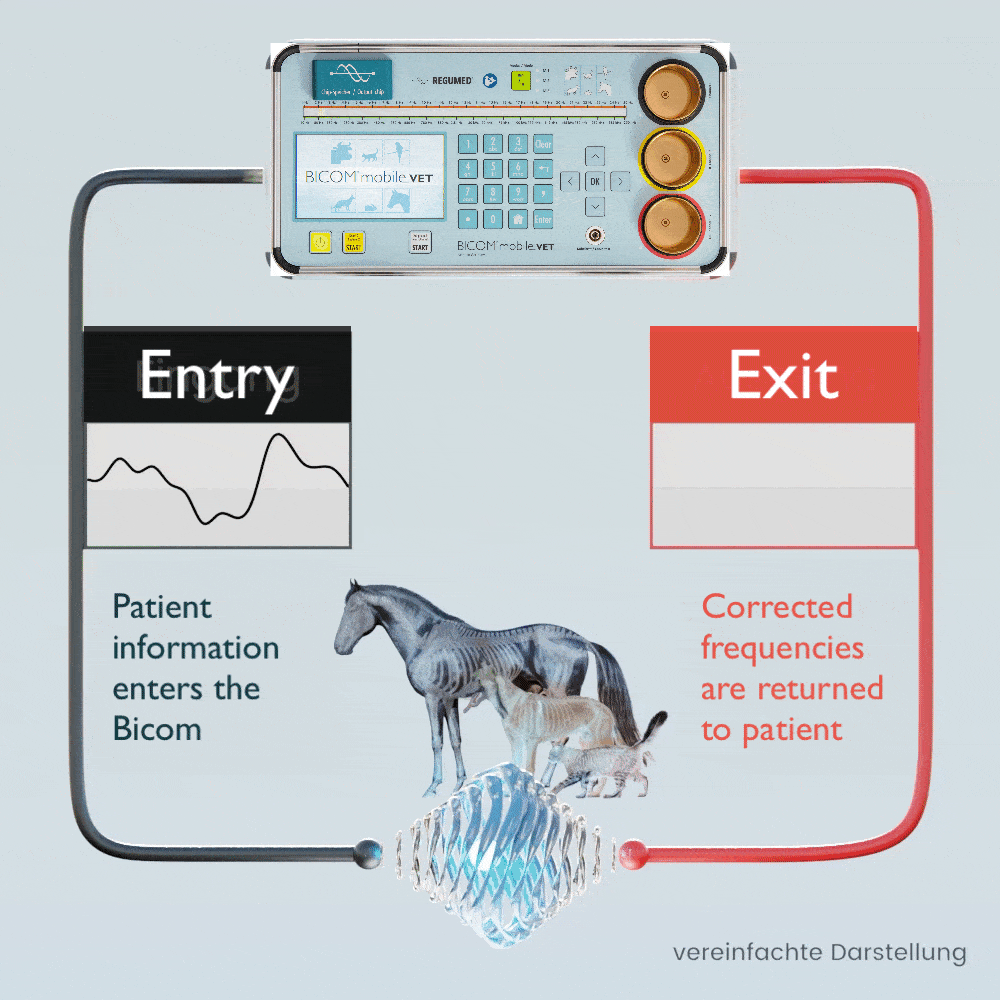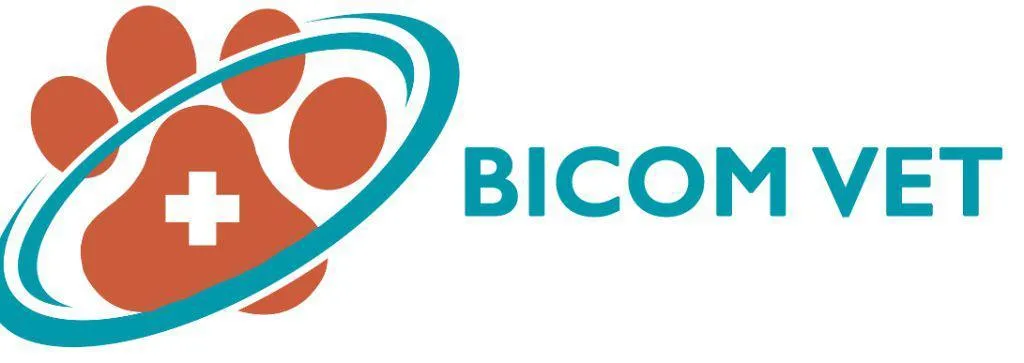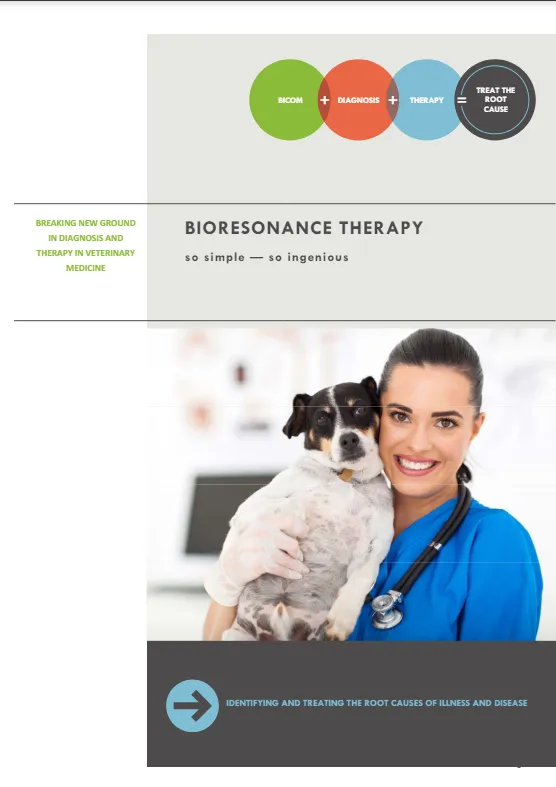Treatment with the help of the patient’s own information
in the BICOM® mobile VET bioresonance device
In contrast to other “frequency therapy devices”, BICOM® bioresonance is a method that is highly individual and perfectly tailored to the needs of the patient through the use of the patient’s own information and the possibility of testing specific wave patterns for resonance.
The patient’s own pathological and physiological information is recorded using special applicators and fed into the BICOM® mobile VET.
Depending on the therapy program, the specific wave pattern as a carrier of information is amplified, weakened or inverted and transmitted back to the patient in modulated form, which means that the transmission of information changes in clarity depending on the modulation or it disappears completely.
The treatment signals continuously adapt to the changing pathological situation of the patient. As the therapy progresses, the body’s ability to regulate is reactivated.
Find out more about this topic at our regular events. Together with veterinarians and animal naturopaths, we offer various face-to-face and online events .
The BICOM® bioresonance method is a cause-oriented, holistic treatment concept. It can narrow down the cause of the health problem in animals and find out even the hidden causes of the clinical picture.
Animals have a natural regulatory system that can also compensate for unusual influences. However, even good self-healing powers eventually reach their limits. Persistent exposure to allergens, environmental toxins, fungi, viruses, bacteria or stress and changed living conditions weaken the immune system and are often the cause of an illness. In particular, fungal infestation on the skin or chronic diseases in general are not always due to a breeding-related genetic defect, but are signs of a disturbed immune system.
The BICOM® bioresonance method is the key to successful diagnosis and therapy, especially for animals that cannot tell us exactly where it hurts or what the symptoms are. It is a gentle form of therapy that can be carried out without side effects and without additional stress for the animal.
The BICOM® mobile VET records the bioenergetic state of the animal, processes the information it contains and returns modified vibrations / therapy frequency patterns to the animal. Symptoms and stress can be diagnosed and targeted therapy can be initiated.
Through the use of endogenous and exogenous substances, the body’s own self-healing powers can be activated and imbalances that have existed for a long time can also be regulated.
REGUMED Medizintechnik are pioneers of the BICOM® bioresonance method. More than 30,000 therapists worldwide, well over 10,000 of them in Germany, successfully use their therapy concept.

Biophysical basics of the bioresonance method
Life is only possible when three conditions are met: matter, energy and information.
We also find these aspects in conventional medicine, both in diagnostics and in therapy. For example, every drug is also a carrier of information.
Information is neither energy nor matter, it is immaterial and comparable to the meaning of a message from a sending to a receiving system.
In addition to the electrical processes in the receptor proteins and biomembranes in general, electromagnetic interactions through light (biophotons) also play a role in cell communication and the transmission of information.
Specific electromagnetic wave patterns act as information carriers. These wave patterns can be modulated by the BICOM® device in order to eliminate disturbing or stressful information in an organism.
The goal is to restore the free flow of healing information (cell communication) and thus support the self-regulation of the organism and the self-healing powers.
Individual, patient-specific information or information from native substances, digitized substances or information stored on storage media can be used for therapy.
What your colleagues are saying…

Bioresonance Therapy And Lactose Intolerance
Lactose intolerance is a truly unpleasant condition to suffer from. A patient that has been declared lactose intolerant means lactose cannot be properly digested by their body. Lactose is a particular form of sugar that is naturally found in milk, as well as dairy products that are produced from milk. WebMD explains that it is essential to note that being lactose intolerant does not make a patient allergic to milk products, but only means their body cannot process a particular natural sugar found in milk products. There are some concerns amongst patients who suffer from this condition; thus methods to reduce the body’s intolerance to milk and milk products if often researched.
Complications Of Lactose Intolerance
The major complication that being lactose intolerant poses to the human body is the fact that milk and milk products are often the primary source of calcium in the diet of most people. When a person is unable to digest the lactose content of milk, it also means they can only consume a very small amount of milk – if any at all. With this in mind, being lactose intolerant puts a person at a much higher risk of becoming calcium deficient.
Calcium deficiency can be a serious health concern as this particular mineral is vital for maintaining strong and healthy bones. According to Healthline, an inadequate amount of calcium in the human body can lead to a higher risk of developing certain problematic health conditions, including osteoporosis and osteopenia. Hypocalcemia, also called calcium deficiency disease, is another condition a person is at a higher risk of when they do not consume an adequate amount of foods to maintain healthy calcium levels.
Symptoms Of Lactose Intolerance
Lactose intolerance can cause some unpleasant symptoms to develop, but these symptoms only become present after a person has consumed a product that contains lactose – this includes cow’s milk or any product produced from cow’s milk. Mayo Clinic explains that a person usually starts to notice the symptoms of lactose intolerance after approximately 30 minutes of consuming such a product. The symptoms may be delayed by as much as two hours before they become present.
The most common symptoms that a person may experience after consuming a product that contains the lactose natural sugar includes abdominal cramps, gas and bloating. Some people also find that dairy products cause them to experience diarrhea. Nausea is also a relatively common symptom. In rarer cases, a person may also vomit after becoming nauseous.
Potential Causes Of Lactose Intolerance
Lactose intolerance is caused by either the absence of lactase or a deficiency of lactase, a particular enzyme that is responsible for breaking down lactose into galactose and glucose. When the body does not have an adequate level of lactase, it usually leads to symptoms related to lactose intolerance when the patient consumes any product that contains lactose.
In rare cases, a patient may experience lactose intolerance due to their genetic makeup. In such a case, they would not have any lactase enzymes in their gastrointestinal tract. Lactose intolerance usually becomes present later in life, however, and is often caused by certain health conditions that affect the gastrointestinal tract. There are also certain types of medication that can affect lactase levels in the gastrointestinal tract.
According to eMedicine Health, common conditions that leads to a deficiency of lactase enzymes include Chron’s disease diabetic enteropathy, celiac disease and gastroenteritis.
How Lactose Intolerance Is Treated
For those who have been diagnosed with lactose intolerance, it may be unfortunate to learn that there is no cure for this particular disorder. It is, however, possible to control the condition through diet changes. Patients who have no lactase present in their gastrointestinal tract should try to avoid dairy products and obtain their calcium from alternative sources, such as other foods that are high in calcium or through supplements. Individuals with a lactase deficiency may still be able to include dairy in their diet, but they should limit the amount of dairy products they consume. NHS Choices report that there are some products that are available in a lactose-free option.
Bioresonance Therapy And Lactose Intolerance
When it comes to food intolerances, bioresonance therapy offers a method for identifying multiple intolerances in one single session. This particular technique has been used by thousands of people. Since the symptoms associated with lactose intolerance may be caused by another particular problem as well, it is important for patients to obtain an accurate diagnosis. With the use of bioresonance therapy, a patient is able to determine whether their symptoms are, in fact, caused by a low lactase level, when another intolerance may be to blame, or whether it is a completely different condition they are suffering from.
Conclusion
Being lactose intolerant can cause numerous uncomfortable gastrointestinal symptoms, such as bloating, gas and abdominal pain. The condition can be present from birth, or develop later in life due to the use of medication or the development of certain diseases that affect the gastrointestinal tract. Diagnosing the problem is the first step to controlling the symptoms. Bioresonance therapy offers patients an opportunity to identify the potential of low lactase levels, as well as the opportunity to uncover other types of intolerances which may also be contributing to the particular symptoms they are experiencing.
Treatment Priorities
For gentle and optimal treatment of the causes of diseases in animals
The BICOM® bioresonance method is predestined for use with large and farm animals such as horses , but also with dogs , cats and small animals. The treatment focus of the BICOM® mobile VET is wide-ranging. It is now used for many indications.
It recognises health deficits at an early stage and is used, among other things, for the following symptoms:
sweet itch
Feed intolerances
allergies and related diseases
COB/COPD
leishmaniasis
Lyme disease
anaplasmosis
lameness in horses
hoof ulcer
Poisoning by poisoned baits, plants etc.
mauke
Feline infectious peritonitis (FIP)
Cat flu/cat disease
eye/conjunctivitis
and much more
Get advice now!
Our experts are happy to be there for you personally
Our BICOM® bioresonance experts are available to answer any questions you may have
and will be happy to advise you personally and individually.




Request more information
Quick Links





Facebook
Instagram
Mail